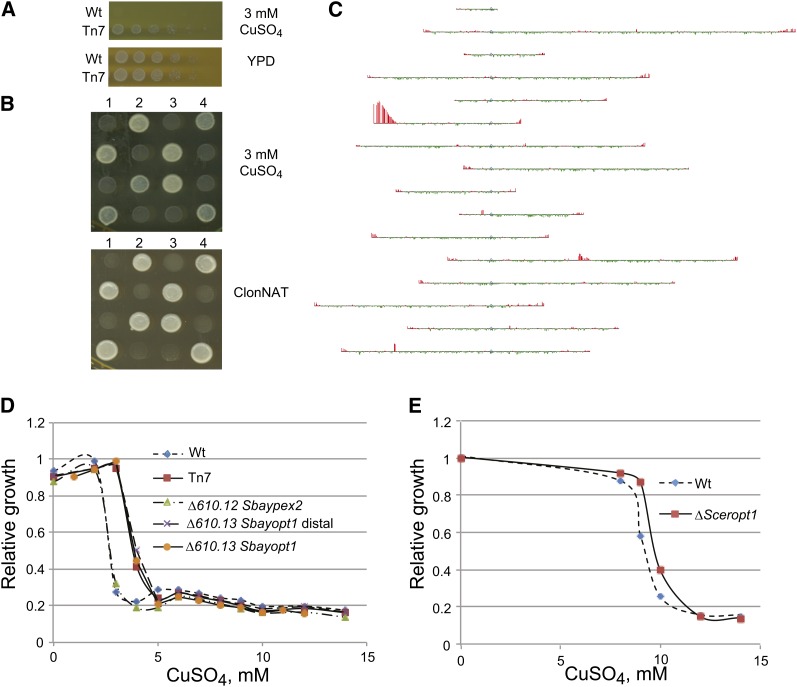Figure 4.
610.13/OPT1 mediates resistance to copper toxicity in S. bayanus and S. cerevisiae. (A) A Tn7 insertion mutant was identified in a screen for mutants resistant to copper sulfate; a series of dilutions of cells were plated on YPD and YPD with 3 mM CuSO4. (B) The resistance phenotype cosegregates with the ClonNAT resistance marker carried by the transposon; the mutant strain was backcrossed to wild type, and tetrads (in columns, indicated by numbers) were phenotyped for resistance to ClonNAT and for growth on YPD with 3 mM CuSO4. (C) The site of the insertion was mapped by enriching genomic DNA for transposon DNA and using an array hybridization technique (Gabriel et al. 2006). Data are mapped onto the chromosomes, which are aligned by the centromeres. Subsequent PCR amplification using primers specific to the transposon and flanking regions mapped the insertion site between the genes SbayPEX2 (610.12) and SbayOPT1 (610.13). (D) Mutation of the S. bayanus gene SbayOPT1 confers copper resistance; SbayOPT1 is divergently transcribed from SbayPEX2, so a deletion of only the 3′ distal portion of SbayOPT1 was also tested to exclude any effect on SbayPEX2. (E) Mutation of the 610.13 ortholog OPT1 in S. cerevisiae confers copper resistance.

